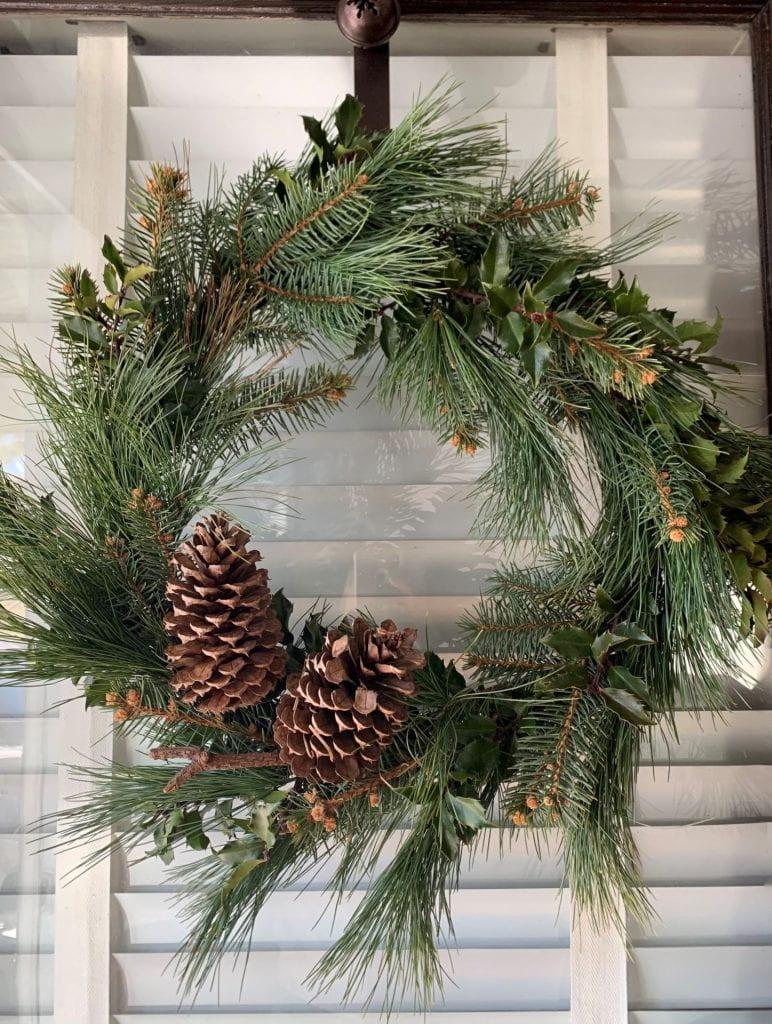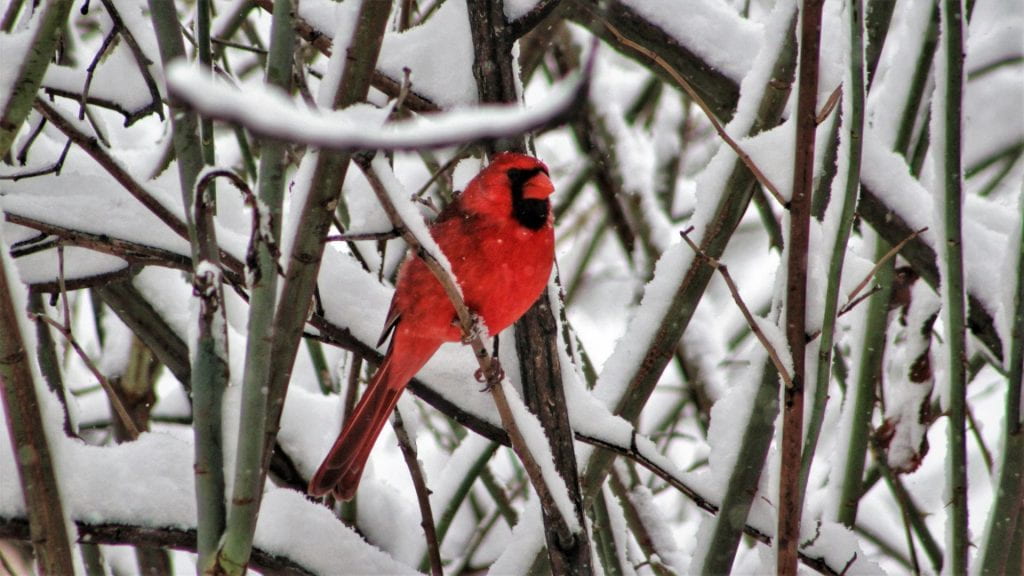This article has been updated by Communications Associate Faith Phillips for recirculation in December 2023.
Whether you are celebrating Christmas, Hanukkah, Kwanzaa, or just the winter vacation, the holiday season is upon us. It’s time for traveling, gift-giving, and big feasts. We hope that you will have a good time, no matter when or where your celebration takes place.
On the flip side, the holiday season corresponds to a peak in consumerism, energy consumption, and waste generation. American household holiday lights, for example, use up more electricity than some countries do in a year (2015, AFP). But like every problem we identify, there is an opportunity for using an alternative practice with a lower impact. For instance, if every American family wrapped just three presents in reused materials, it would save enough paper to cover 45,000 football fields (2015, USGBC).
There are so many ways to keep the holiday season cheerful and festive while reducing its environmental impacts. From gift ideas to meatless meals to decorated trees, we’ve compiled a list of tips and resources to help you make mindful decisions as you plan for the holidays. A combination of creativity, simplicity, and money savings… this guide is our gift to you!
Thoughtful and Sustainable Gifts
Every year, Americans spend hundreds of billions of dollars on holiday gifts, demonstrating substantial purchasing power that can influence marketing and industry trends. What if these dollars were invested in local and sustainable businesses and products? Here are a few ways you can make the most of your money, getting presents for your loved ones while also supporting great causes.
Reusable bamboo utensil set: This sustainability-branded set includes a fork, a spoon, and a knife, as well as a metal straw and a straw cleaner, all packed in a cute mesh pouch. Purchase sets for $8 apiece from the Office of Sustainability (OOS) website.
Support a small, local business: By electing to spend your money at a small business, you are directly supporting the local economy. Make that support even more effective by purchasing from a minoritized business, such as a woman-owned, veteran-owned, POC-owned, or LGBTQ-owned business. For this holiday season, the Skandalaris Center very conveniently put together a list of student-run start-ups for you to directly support members of the WashU community, including a holiday specific guide containing several sustainable options.
There are also many small businesses outside of the WashU community, but still within St. Louis, that have an emphasis on sustainability and can be new avenues for eco-conscious gift giving. Amongst these include Social Goods Marketplace, Dharma + Dwell, Zee Bee Market, Garden District STL and Urban Bower. Happy shopping!
Gift cards for local restaurants: Everybody eats. A gift card for food is a safe present that allows local establishments to keep staff employed at the time they need it the most. We encourage you to prioritize sustainable restaurants, such as those certified by the Green Dining Alliance, and/or Black-owned restaurants. Better yet, look into the ones that are both Black-owned and GDA certified!
Gift cards for activities or experiences: Gifting experiences is a great fit for those who already have everything they need. Local creative reuse and repair shop Perennial STL offers gift cards for classes and workshops, allowing recipients to engage in monthly crafting happy hours for an entire year. For organizations that host activities and experiences but may not sell gift cards (community colleges, libraries, etc.), consider getting crafty and making a voucher yourself!
Memberships for non-profit organizations: Purchasing a membership on someone else’s behalf is a great way to support organizations you value while encouraging your loved one to get more involved in the community! Memberships often come with a number of perks, including privileged access to programs, swag, communications, and more. Missouri Coalition for the Environment (MCE), whose activism covers a wide variety of local environmental issues, is a good place for sustainability-oriented Missourian folks to start.
Wraps and Cards
Instead of buying gift-wrapping rolls, use what you already have at home: old newspapers, holiday catalogs, magazines, silk scarves, and brown bags from the grocery store make for creative gift wrapping. You can even repurpose cloth or fabric scraps! There is also biodegradable wrapping paper that comes in a variety of festive prints.
Skip the tape. Try to tie gifts up with a ribbon, twine or raffia instead of taping everything together. Even vintage brooches can become unique closures to a holiday gift. Many tape brands are petroleum-based and are not recyclable. Creating fabric bows or reusable gift tags can also be a great family activity! Here’s another protip: while tape is not recyclable, you do not need to remove it from wrapping paper before putting it in the recycling; it will be removed through the recycling process.
If you send holiday cards, buy cards and envelopes made at least partially with recycled-content, or mail the electronically. Make your own cards or gift tags out of last year’s cards and previously saved wrapping paper. Cards that are FSC certified are sourced from responsibly managed forests that retain environmental, social, and economic benefits.
Trees, Wreaths, and Other Decorations
Decorating trees is a big part of the holiday spirit. While it can be disheartening to know that most trees are only displayed for a few weeks before ending up in the trash, here are some alternatives to keep this holiday centerpiece sustainable.
- The most zero-waste option would be to decorate a tree in your yard or an indoor tropical plant!
- If you do have a real tree, consider composting it after the holiday season is over. Many communities have a local tree recycling program, or you can mulch it yourself and create a great source of nutrients for your garden.
- You can also purchase a potted Christmas tree, so once the holiday season comes to a close, you can replant it, allowing it to reestablish its roots in the wild and grow once more.
- If you are going artificial, consider a plastic-free material! You’d be surprised to know that you can actually make your own tree out of cardboard or other easy-to-find materials.
- Have you ever thought of edible ornaments for your tree? We’ve tried popcorn garlands and oven-dried citrus slices, but there are plenty more options out there. When the holidays are over, you can either eat or compost your ornaments! Yay for being storage-free.
- If you are looking for a new holiday centerpiece or wall hanging, think about creating one of these fun holiday decorations, many of which can be quick and easy DIYs to do with kids.
You can also make your own wreath out of foraged materials. Here is a tutorial lovingly created by Space and Equipment Planner & Sustainability Program Leader at the School of Medicine, Alicia Hubert.

For string light decorations, make sure to pick the LED kind. LED lights use less energy than traditional incandescent bulbs and last significantly longer. They come in a variety of colors and styles so there’s no compromise on a festive look. Some even come with an integrated timer that will take the stress out of having to turn them off every night. Choose soy or beeswax candles; they don’t contain paraffin, a petroleum-based ingredient that the EPA says can negatively affect your indoor air quality.
After the glow of Christmas is gone and the decorations have been taken off the tree, be sure to responsibly dispose of your Christmas tree waste. There is also an annual holiday lights recycling collection on both the Medical and Danforth Campus.
Further Reading
- Quick Tips for Reducing Holiday Waste
- 9 Tips for Greener Gift Wrap
- Vanderbilt University Sustainable Holiday Greening Guide
- USGBC’s cheat sheet for a sustainable holiday season
- NY Times: Real vs. Artificial Christmas Trees: Which Is the Greener Choice?
- Green Dining Alliance: Meat-Free Holiday Dinners
- 8 Places with Ethical & Sustainable Holiday Decorations
